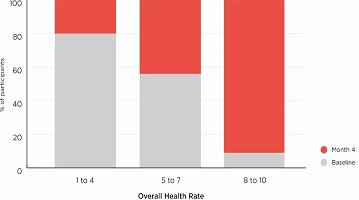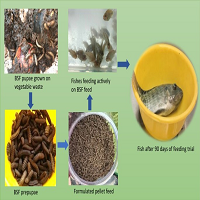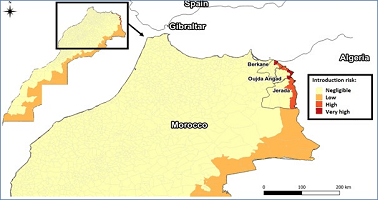INTRODUCTION
Glyphosate (N-(phosphonomethyl) glycine) is widely used by agriculture for control of weeds. Genetically modified soy, corn, canola, alfalfa, cotton, and sorghum have been developed to be resistant to glyphosate, allowing farmers to control weeds without damage to crops. The use of glyphosate for weed control is controversial.1,2,3 Glyphosate is a broad-spectrum herbicide which interferes with the synthesis of aromatic amino acids in plants and microorganisms by inhibiting the activity of the 5-enolpyruvyl shikimate 3-phosphate synthase (EPSPS) enzyme.4 It is assumed that glyphosate does not directly affect vertebrates as they lack this enzyme.5,6 It has been claimed that it may be possible for glyphosate to influence microorganisms (for example, Lactobacillus spp., which forms part of the normal microbiota of humans and animals).7 Lactobacillus spp. are beneficial bacteria, which promote general well-being in the host by balancing the gut. The response of lactobacilli to different stress conditions such as low pH, bile salt stress, high or low temperature stress, nutrient stress, etc., has been widely studied, due to their applications in healthy food and complementary medicines.8,9,10,11 It has been suggested that impact on beneficial microbes by glyphosate may interfere with human and animal health,2,7,12 although this is not necessarily a widely-held opinion. A number of recipes for so called “organic roundup” or “organic herbicide” have become widely distributed on the internet13 as a way to address the perceived problems with glyphosate. It is claimed that unlike glyphosate containing products, these organic herbicides do not impact microbes, be they be in the soil or gut of animals.
To our knowledge, the reports investigating possible glyphosate effects on bacteria from the bovine rumen are limited.
MATERIALS AND METHODS
We compared a commercial glyphosate herbicide (Zero Weedkiller- Super Concentrate; Yates Ltd, Auckland, New Zealand) containing glyphosate (3.92 mg/ ml once diluted 8 ml/l for application) against a recipe widely distributed on the internet13 described as an organic herbicide on the growth of five lactobacilli isolated from the bovine rumen. Variations in the amounts of each component of the organic herbicide are common; for this study, we used the following recipe: 1.89 l white vinegar (Pams Products Ltd; Auckland, New Zealand), 120 g salt (Cerebos Ltd; Dunedin, New Zealand) and 30 ml dish soap (Ecostore Ltd; Auckland, New Zealand). The isolates used were genetically identified as, RC 2 (Lactobacillus plantarum 16), RC 5 (L. plantarum 16), RC 13 (L. plantarum subsp. plantarum ST- III), RC 25 (L. plantarum 16) and RC 30 (L. plantarum subsp. plantarum ST- III). The microbiological and probiotic characteristics of these Lactobacillus have been previously reported.11
The disc diffusion method was used to assess the antimicrobial activity of commercial glyphosate, glyphosate (Nphosphonomethyl glycine, Sigma-Aldrich New Zealand; Auckland, New Zealand), organic herbicide and the organic herbicide individual ingredients. One hundred microliter of overnight lactobacilli cultures were evenly spread onto the surface of MRS agar plates (Oxoid, Basingstoke, UK) and 7 mm diameter blank sterile paper discs (Oxoid, Basingstoke, UK), antibiotic (ampicillin) discs or papers discs dipped in commercial glyphosate, organic herbicide, white vinegar, glyphosate (3.92 mg/ml), salt (62.5 mg/ml) or detergent (15.6 µl/ml) were transferred aseptically onto the surface of the agar. Replicate plates (n=3) were prepared for this study. All test solutions were sterilised by filtration through a 0.10 µm filter. The plates were then incubated for 24 h at 37 o C under anaerobic conditions. Following incubation, the plates were then inspected for zones of inhibition around the paper discs. The sizes of zones were measured from the outer edge of the disc to the outer edge of the zone.
RESULTS
Following incubation, the plates were then inspected for zones of inhibition around the paper discs, see Figure 1 for typical examples.
Figure 1: Inhibition of Rumen Isolates RC 2 (left) and RC 25 (right) by the Agar Disc Diffusion Assay. RC 2 (left) Plate Shows Zone of Inhibition Around Discs Containing Clockwise from Top Left; Antibiotic, Blank (Control), Organic Herbicide or Commercial Glyphosate. The RC 25 (right) Plate Shows Zone of Inhibition Around Discs Containing Clockwise from Top Left; Vinegar, Salt, Detergent or Glyphosate.
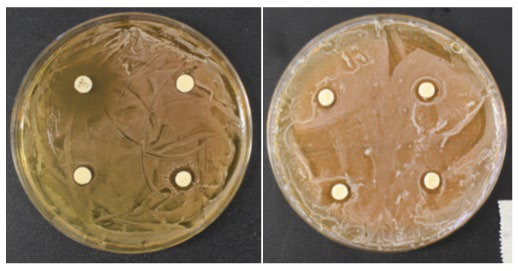
Small inhibition zones of up to approximately 1 mm were observed around commercial herbicide, organic herbicide, glyphosate and the individual components of the organic herbicide (Figure 2). The inhibition zones for ampicillin ranged from about 5 to 10 mm depending on the isolate. The inhibition zone produced by ampicillin was significantly greater (p<0.01) compared to the commercial, organic herbicide and blank discs. Differences between the commercial, organic herbicide and glyphosate and the individual components of the organic herbicide were not significant (p>0.05).
Figure 2: Inhibition Zones (mm) for Rumen Isolates RC2 ( ), RC5 ( ), RC13 ( ), RC25 ( ) and RC30 ( ) after Incubation with Discs Containing; Antibiotic, Blank, Commercial Herbicide, Organic Herbicide, Glyphosate and the Individual Components of the Organic Herbicide. Error Bars are Standard Error Means (n=3)
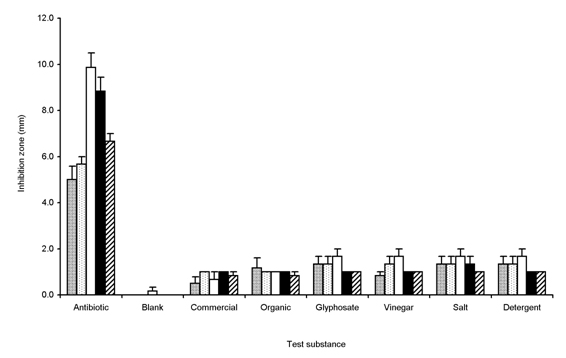
DISCUSSION AND CONCLUSIONS
In a similar study that compared the effects of glyphosate on potential pathogens and beneficial members from poultry,14 it was reported that most pathogenic bacteria were highly resistant towards the glyphosate, although Campylobacter spp. were susceptible. However, the beneficial bacteria had a moderate to high degree of susceptibility to glyphosate.14 It has also been reported that commercial glyphosate products, such as Roundup® are more toxic towards food microorganisms than glyphosate alone at similar concentrations.12 Many substances have either positive or negative influence on the growth of microbes. Some studies of glyphosate and bacteria growth have drawn conclusions about the toxicity of glyphosate towards microbes without suitable controls or specifically testing individual components such as glyphosate from a mixture as having an influence without examining it alone or in comparison with positive and negative control. Kurenbach et al15 have reported that glyphosate can reduce antibiotic susceptibility in Escherichia coli and Salmonella enterica serovar Typhimurium. While these researchers did not investigate glyphosate alone (they evaluated a commercial glyphosate containing product), the claim glyphosate reduced antibiotic sensitivity is not clearly supported by their data; furthermore, many of the test combinations they evaluated appeared to increase antibiotic sensitivity.
We have shown that for 5 isolates from the bovine rumen glyphosate, a commercial glyphosate herbicide, and an organic herbicide and its components appear to all have very little (if any) influence on microbial growth. This very small influence by glyphosate (be it alone or in the form of a commercial product) and organic alternatives when compared to that of an antibiotic that the isolates are known to be sensitive to suggest that this influence is minor and likely to be of no consequence in vivo.
CONFLICTS OF INTEREST
The authors declare that they have no conflicts of interest.





